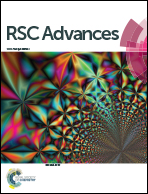Surface modification of polysulfonamide fiber treated by air plasma
Abstract
The surface of polysulfonamide (PSA) fiber was modified by air plasma to improve the wettability and interfacial bonding performance of the fiber. The optical contact angle and the single fiber pull-out method were used to determine the wettability and interfacial bonding performance of the PSA fibers before and after surface modification. The surface morphology and chemical composition of the fiber were evaluated by field emission scanning electron microscopy (FE-SEM), atomic force microscopy (AFM), and X-ray photoelectron spectrometry (XPS). Results showed that after air plasma treatment, the water absorption time decreased from >400 s to approximately 0 s and the wettability of the PSA fiber increased sharply. The increase in processing time also improved the PSA fiber wettability. After air plasma treatment for 3 min, the interfacial shear strength reached a peak value of 11.19 MPa, an increase of 56.94% compared with the untreated specimen. FE-SEM and AFM observations confirmed that the PSA fiber surface roughened with a prolonged treatment duration. XPS analysis showed that the O/C atomic ratio on the PSA fiber surface can be increased from 26.93% to 47.21% after 3 min of treatment. At such conditions, the oxygen-containing polar groups reached the highest levels, which enhanced the wettability and interfacial bonding performance considerably. Furthermore, the single fiber tensile strength test showed that the PSA fiber breaking strength exhibited only slight reductions after a short air plasma treatment time.


 Please wait while we load your content...
Please wait while we load your content...